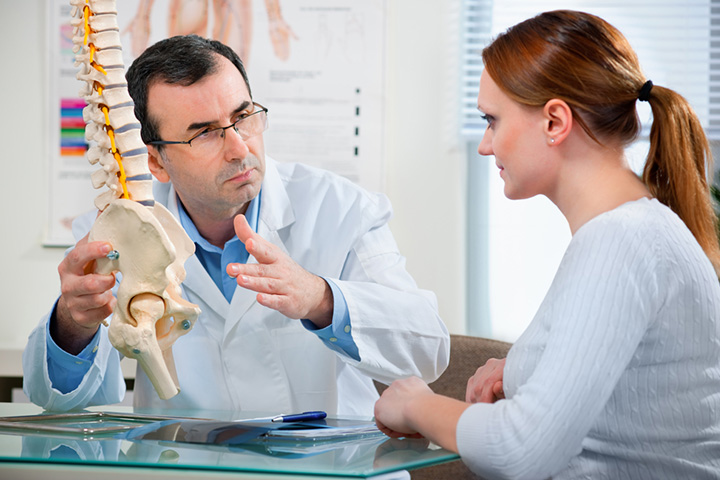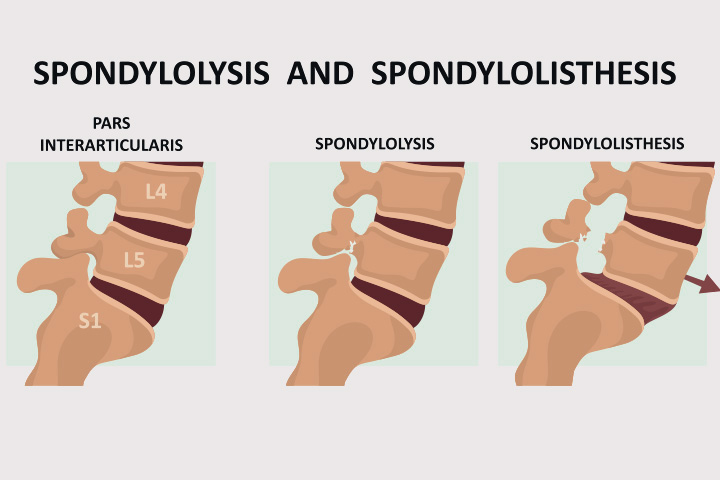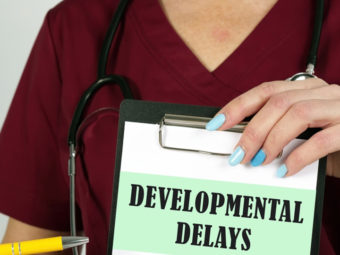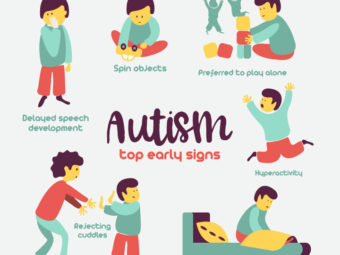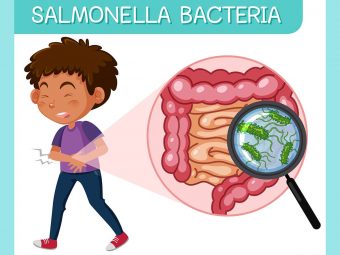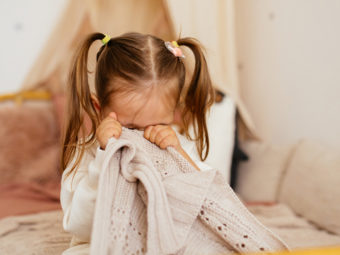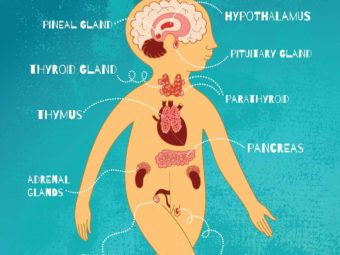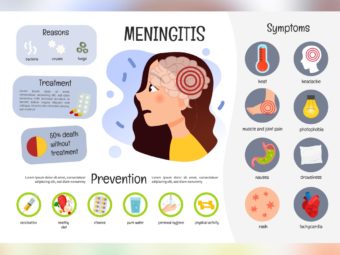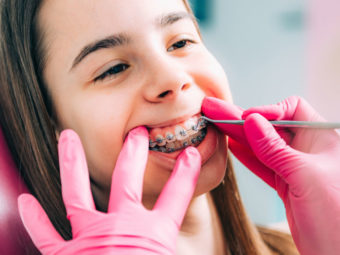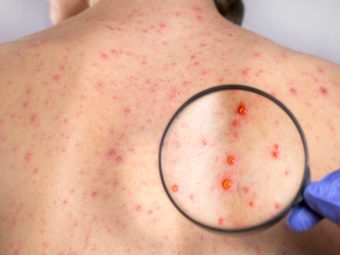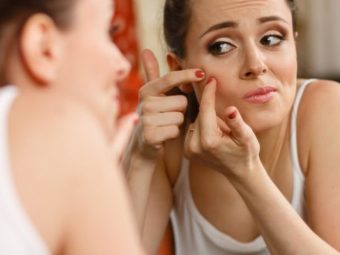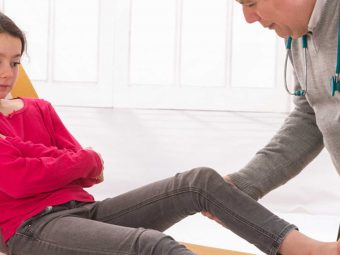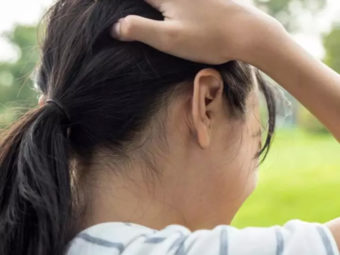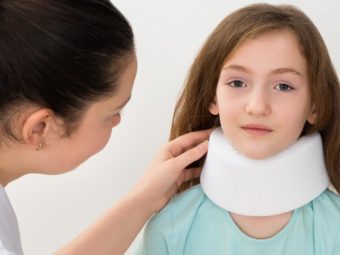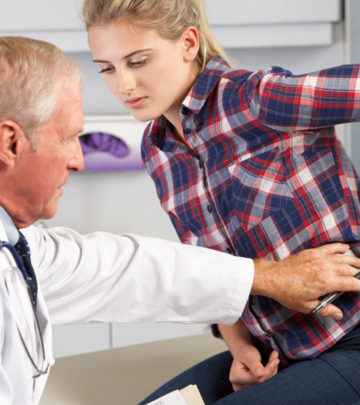
Image: ShutterStock
Back Pain in teens is a common adolescent pain. It can happen due to a pulled muscle, a sprain, carrying heavy backpacks, or bruising of the back. Back pain arising from these factors usually subsides in a few weeks without any medical intervention. However, persistent back pain combined with some other symptoms may indicate underlying conditions such as juvenile spine issues or herniated discs, and should be assessed by a healthcare professional. Keep reading this post as we explain the causes, home remedies, treatment, prevention, and possible medical conditions that may lead to back pain in teens.
What Could Cause Back Pain In Teenagers?
If your teenager is complaining of back pain, observe the symptoms to know if they are due to a physical injury, an underlying medical condition, or stress induced-aches. Sometimes, certain lifestyle changes or injuries may also cause lower back pain in teenagers. We have also included a few medical conditions that might cause back pain in the later section of the post.
- Physical injuries: Usually, back pain in a teenager could be because of stress on the spine and surrounding structures resulting from over-exertion during athletic participation, training regimens, and carrying heavy backpacks (1) (2). The symptoms may include stiffness in the back area, pain in the middle, or lower back (3).
- Heavy backpacks: Carrying heavy school bags every day to and fro from home to school might be one of the biomechanical factors that can cause back pain in children and teens. However, there is no clear research-based evidence to prove the association between back pain and schoolbags in teens (4).
- Poor posture: Sedentary lifestyle, such as sitting and lying down and watching TV or computer for prolonged hours, obesity, and stress, is one of the most common causes of back pain in teenagers.
- Strenuous work: Taking up a new exercise regime or physically straining jobs, such as lifting heavy loads, bending, or stretching too far for a long time might strain and wear out the back muscles and result in back pain. Repeating the same actions could cause repetitive strain injury.
Kane, a young aspiring physical therapist, reflects on his teenage years as a dedicated weightlifter. He recalls, “I worked hard on bracing my trunk and keeping my back flat. I was doing everything right! Or so I thought. My back pain was noticeable before, but now it’s just getting worse and worse. As time went on, I couldn’t sit in school because I was in constant pain. I finally sought professional help (i).”
- Acute spinal cord injury: This is an injury to the spinal cord that could have occurred when the spine or neck is bent or compressed during birth, a motor vehicle accident, sports-related injuries, stab wounds, etc.
Symptoms of acute spinal injury include.
- Muscles weakness
- Loss of movement in the legs
- Bladder and bowel problems
- Breathing problems (2)
Is Back Pain A Sign Of Puberty?
A study found that there is an increased incidence of back pain in teenage girls nearing puberty. This could be due to the physical changes, such as (5):
- Increase in height and changes in body composition.
- Increase in fat mass at the end of puberty, which might replace active muscle fibers.
- Hormonal changes.
However, further research is needed to learn more about the association between puberty and back pain.
Back pain is a common complaint among children and teenagers, and its occurrence can vary based on gender. The chart below demonstrates the results of a study that analyzed the prevalence of back pain among 1,720 schoolchildren.
The findings reveal that while the prevalence of back pain remained relatively stable for boys between 11 and 16 years, it increased for girls, reaching its peak at 16 years, indicating that girls may be more vulnerable to back pain than boys.
Prevalence of Back Pain in School-Age Children by Gender and Age
Source: Back pain prevalence and associated factors in children and adolescents: an epidemiological population study; Revista de Saúde PúblicaTreatment For Common Back Pain In Teenagers
Your child’s doctor would recommend a treatment regimen based on the diagnosis, which involves a physical examination and, if necessary, an X-ray and CT scan.
- In the case of spinal injuries, medical attention is required. Sometimes, surgery may be needed to correct the broken bones.
- According to a study, physical therapy and manual therapy were found to be effective in treating lower back pain in children. However, certain limitations of the study prevented drawing a definitive conclusion (6).
- Back pain due to sprains and bruises may subside after rest or activity modification.
- Your child’s doctor might prescribe non-steroidal anti-inflammatory drugs if there is unbearable pain and swelling due to inflammation.
- Physical therapy programs might help in reducing back pain.
- Hamstring and abdominal strengthening exercises might help in relieving persistent back pain.
 Quick tip
Quick tipHome Remedies For Back Pain In Teenagers
If your teenager has acute back pain without any additional symptoms such as excessive fatigue, then some of these home remedies might help provide relief.
- According to a Cochrane review, superficial hot and cold compress might provide short-term relief from lower back pain (7).
- Menthol, which is the active ingredient in several topical pain-relieving creams, might help mask the pain for a short period by creating a cooling sensation. However, this does not treat the underlying cause (8).
- Topical pain relievers that contain methyl salicylate are said to provide relief, but there is no research to prove their effectiveness. You may try this if your child does not have aspirin allergy and is older than 12 years (8). Salicylates should not be used in younger kids.
- Topical non-steroidal anti-inflammatories, such as diclofenac, can be used for pain relief.
- Check your teen’s posture and correct it by showing them how to have a good posture.
- Use chairs that can offer better back support.
- Do not encourage your teen to spend hours playing video games and watching television; ask them to take a break and stretch after every hour.
- If your teen exercises, then make sure they do it the right way.
 Quick tip
Quick tipWhen To Take Your Child To The Doctor
Image: Shutterstock
Take your child to a doctor if they complain of the below symptoms in addition to back pain.
- There is a pain in the legs associated with numbness and weakness.
- Persistent pain not relieved by rest.
- Intermittent back pain that persists for more than four weeks.
- They have other symptoms, such as fatigue and sleeplessness.
- The pain is severe and interferes with their activities and sleep.
- The back pain occurs at night, and your child wakes up in the middle of their sleep.
- Bowel or bladder problems (9).
- Pain associated with other symptoms such as weight loss, fever, night sweats.
If you notice any of the above symptoms, then back pain could be due to an underlying medical condition. Next, we list down a few possible medical conditions that might lead to back pain in teenagers.
Medical conditions that may cause back pain in teenagers
Here are a few medical conditions that might cause back pain in teenagers.
1. Spondylolysis
Image: IStock
This condition is caused due to bone defects in the vertebrae of the spinal cord. Such defects can lead to the weakening of the bones and further cause the vertebrae to slip. This condition could be congenital or acquired (found mostly among athletes). The symptoms are mild and often unknown. If the symptoms do occur, they are most likely to appear during the growth spurt (10).
- Low back pain that spreads across the area
- Worsening of the pain during vigorous activity or exercise
This condition could be treated by making a few lifestyle changes, physiotherapy, braces, or surgery in rare cases.
2. Scheuermann’s disease
Also known as Scheuermann’s kyphosis, this is a condition where the spine would have a rounding posture, which could lead to a curvature of the spine. Although the exact causes for this condition are unknown, it is said to be hereditary and might develop in teenagers between the ages of 10-15 years. The symptoms include:
- Difference in shoulder height
- Tightness of muscles in the back of the thigh
- Back pain.
This condition could be managed with physiotherapy, braces, or surgery in some severe cases (11).
3. Scoliosis
Image: Shutterstock
In this condition, the spine would be curved in the shape of an ‘S’ or ‘C’. So, instead of growing straight, the spine would have a side-to-side curvature. The exact reason for this is unknown. Sometimes, genetics and environmental factors could play a role. This condition is found to be more prevalent in girls than in boys and may lead to other issues such as spinal cord compression.
The symptoms include:
- Some pain in the lower back
- Unevenness in the shoulders, waist, and hips
- One leg might appear longer than the other.
This condition could be treated using braces or surgery (12).
4. Juvenile fibromyalgia
This chronic pain condition mostly occurs in teenage girls. It causes sciatica pain and pain in the muscles and soft tissues in the back, neck, shoulders, and arms. If your child is showing any of the below symptoms along with back pain, it could be fibromyalgia. Although the exact cause is not known, some researchers say it could be due to genetics and environmental factors. The symptoms include:
- Fatigue
- Sleep difficulties
- Headaches
- Irritable bowel symptoms
- Anxiety or depression
This condition needs to be managed as there is no treatment for it. Prescribed pain medications for chronic pain, physiotherapy, heat treatments, massage, and relaxation techniques might help (13).
5. Infections
Back pain could also be due to spinal infections. Though these are not common in children, spinal infections in children could be caused by bacteria, viruses, fungi, or parasites. Your child might have the following symptoms:
- Chronic back pain
- Weakness
- Numbness
- Bowel and bladder problems
- Fever (14)
- Weight loss
- Night sweats
When diagnosed in time, these infections can be treated with antibiotic therapies and rest.
6. Tumors
Although not common, back pain could also be because of spinal tumors. A lack of symptoms could delay the diagnosis. The doctor may check for some clinical symptoms, such as:
- Motor weakness
- Muscle rigidity and spasm
- Dull and aching back pain
- Regular pain that occurs at night and disturbs the child’s sleep (3).
X-ray imaging could be used for diagnosing the presence of a tumor. Based on the type of tumor, the doctor might opt for surgery, chemotherapy, and medications (15).
According to Dr. Heather Jeffcoat, doctor of Physical Therapy from Los Angeles, California, “Night pain is a symptom of musculoskeletal-based pain, so it should not cause immediate alarm. Although spinal cancer is rare compared to the incidence of low back pain, you don’t want to ignore night pain and should make an appointment with your doctor to rule it out.”
7. Kidney stones
Image: Shutterstock
The presence of kidney stones leads to a sharp pain in the back, side, and lower abdomen. Other symptoms include:
- Pink, red-colored urine
- Pain while urinating
- Constant urge to urinate
- Inconsistency in the flow of urine
- Cloudy or foul smell in urine
- Irritability
Treatment depends on the size and number of stones.
- If the stones are small, drinking plenty of water might help the child to pass them in the urine.
- Larger stones are removed by breaking them into smaller pieces using shock wave therapy, cystoscopy, and surgery (16).
8. Arthritis
Arthritis could also be a potential cause of chronic back pain in teens, especially in the lower back. Arthritis is a condition characterized by the inflammation of the synovial membrane that lines all the joints in the human body. When this membrane is swollen, the joints are filled with fluid, which in turn leads to stiff, sore, and inflamed joints. Prolonged inflammation may cause damage to cartilage and bone. While arthritis is more common in adults, it may also occur in kids and teenagers. There are many different types of arthritis. Kids with enthesitis-related arthritis may develop juvenile ankylosing spondylitis, leading to pain in the lower back (17).
Can You Prevent Back Pain In Teenagers?
Prevention depends on the reason behind the pain.
- If the back pain is the result of strain, then teach your teens the right way to exercise and lift heavy objects.
- If your child is overweight then encourage them to get fit as obesity can also cause back pain in teens.
- Drinking plenty of water might prevent the formation of kidney stones.
- Making them practice the right posture from an early age may also help prevent back pain. You can consult a qualified physiotherapist who can recommend some posture correction exercises to your child.
- Make sure your teenager is sitting in a chair that has good back support as a chair with poor ergonomics can affect the posture and result in pain.
- Backpacks should not be overloaded and should be worn on both shoulders. Also, the backpack should be made of sturdy material that supports both the shoulders equally.
- Encourage them to use protective gear whenever they are trying a new sport or even when trying a new exercise therapy or regime.
Frequently Asked Questions
1. Can growing pains cause back pain in teens?
Growing pains occur primarily in the legs and are not usually responsible for back pain in teens (18). Consequently, there could be other causative factors, including poor posture or postural dysfunction or increased muscle strain for back pain in children and adolescents.
2. Does back pain mean I’m growing?
A study published in the US National Library of Science indicates that growth spurts happening during adolescence could be a reason for mechanical pressures in the spine, which may, in turn, cause back pain in teenagers (5). However, further studies are needed to prove the causative link between back pain and growth.
3. What organ can cause back pain?
According to board-certified neurosurgeon from Los Angeles, California, Dr. Luke Macyszyn, “Many organs in the thorax and abdomen can lead patients to report back pain. For example, patients who have inflammation in the lining of their lungs will frequently report mid-back/thoracic pain. Moreover, patients with a urinary or kidney infection may also report low back pain. Likewise, even patients with significant constipation will report back pain. Therefore, it is critical that when patients present with back pain, we also explore these and other common etiologies to determine the source of pain accurately.”
4. How do I know if back pain is muscular or organ-related?
Dr. Jeffcoat says, “Muscular pain can be reproduced with palpation, however, the muscle pain may be secondary to the underlying organ pain and should be ruled out by your physician.”
5. Can stress and anxiety contribute to back pain in teenagers?
A few studies report a possible correlation between stress, anxiety, and back pain in adolescents. Stressful life events and anxious situations will likely cause back pain, with a higher risk of chronicity in adulthood (19).
6. What role does physical fitness play in preventing back pain in teenagers?
Scientific studies have outlined that regular aerobic exercises can increase the blood flow and nutrients to the lower back area, which may reduce the stiffness associated with the pain. A regular exercise program combining flexible and muscle-strengthening exercises and aerobics could be beneficial to increase core muscle strength and flexibility (20).
7. Are there any ergonomic considerations for teenagers when sitting or studying for long periods?
Ergonomic considerations such as choosing a chair with an armrest, aiming your gaze at the center of the computer screen, and adjusting the level of the chair to align your upper arm with the spine, may help alleviate or prevent back pain due to posture (21).
Many factors could cause back pain in teens. It could be a physical issue such as a lumbar injury, or sometimes back pain could be due to puberty. Therefore, the medical intervention depends on the underlying cause. Check your teen’s posture, school bag weight, and past medical history. If your teen has been complaining of severe back pain, seek a doctor’s advice. Take a note of all the accompanying symptoms before paying the visit. Follow the treatment plan as advised by the doctor. You may also use a few home remedies and alternative treatments, such as physiotherapy, after seeking the doctor’s approval.
Infographic: Helping Teenagers Maintain Correct Posture While Sitting
Improper sitting posture majorly contributes to back pain in teenagers and young children. Developing a good posture can aid in the prevention of back pain in the long run. Find out how you can help teenagers develop good sitting postures through the infographic below. Illustration: Momjunction Design Team
Key Pointers
- Back pain is not uncommon in teenagers, but persistent back pain could be a sign of underlying medical conditions and physical injuries.
- Physical injuries, poor posture, strenuous work, and acute spinal cord injuries are leading causes of back pain in teenagers.
- Back pain could also occur during puberty due to increasing height, body composition, fat mass, and hormonal changes.
- Depending on the diagnosis, doctors may recommend a treatment regimen after studying your teen’s X-ray and CT scan. The treatment usually consists of ample rest, a dosage of anti-inflammatory tablets, physiotherapy, and surgery.
- Home remedies such as a hot and cold compress, fixing your teen’s posture, purchasing chairs with back support, and encouraging your teen to take a break and stretch after long hours of study or work are recommended.
- It is important to consult a doctor if the back pain causes numbness in the legs, interferes with the daily life of the child, causes fatigue and weakness, causes bowel problems, and if there is persistent pain even after rest.
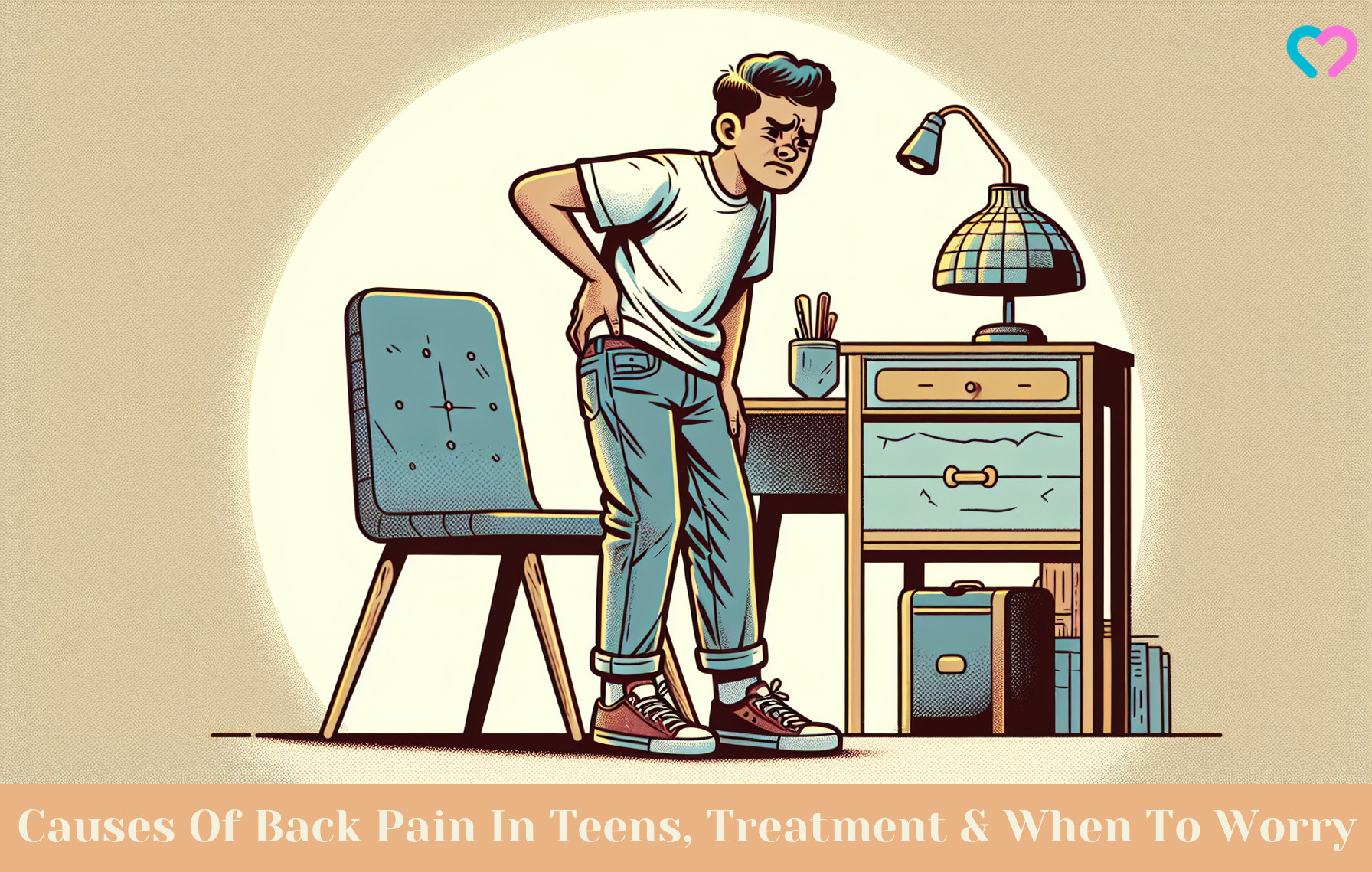
Image: Dall·E/MomJunction Design Team
Discover the reality of back pain in children and gain valuable insights on identifying the signs and providing necessary support for your child in this video.
Personal Experience: Source
MomJunction articles include first-hand experiences to provide you with better insights through real-life narratives. Here are the sources of personal accounts referenced in this article.
i. Back pain for the aging teenage population.https://kanetrains.wordpress.com/2018/03/27/back-pain-for-the-aging-teenage-population/
References
- Christina Jackson et a.; Back Pain in Children: A Holistic Approach to Diagnosis and Management; Journal of Pediatric Health Care
https://www.jpedhc.org/article/S0891-5245(10)00050-7/fulltext - Acute Spinal Cord Injury (SCI) in Children; University of Rochester Medical Center
https://www.urmc.rochester.edu/encyclopedia/content.aspx?ContentTypeID=90&ContentID=P02590 - Robert M. Bernstein and Harold Cozen; Evaluation of Back Pain in Children and Adolescents; American Family Physician
https://www.aafp.org/pubs/afp/issues/2007/1201/p1669.html - Tiê Parma Yamato et al.; Do schoolbags cause back pain in children and adolescents? A systematic review; The British Medical Journal
https://bjsm.bmj.com/content/52/19/1241 - Arnaud Lardon Charlotte Leboeuf-Yde and Niels Wedderkopp; Is puberty a risk factor for back pain in the young? a systematic critical literature review; NCBI
https://www.ncbi.nlm.nih.gov/pmc/articles/PMC4200222/ - Inmaculada Calvo-Muñoz
Antonia Gómez-Conesa and Julio Sánchez-Meca; Physical therapy treatments for low back pain in children and adolescents: a meta-analysis; British Medical Journal - Simon D. French et al.; A Cochrane Review of Superficial Heat or Cold for Low Back Pain; Lippincott Williams and Wilkins
https://www.semanticscholar.org/paper/A-Cochrane-Review-of-Superficial-Heat-or-Cold-for-French-Cameron/c1012873cc0995e3e499727067137ec77f1fc2db?p2df - Rubbing it in; Harvard Health Publishing
https://www.health.harvard.edu/pain/rubbing_it_in - Adam D Jakes Robert Phillips and Michael Scales; Teenagers with back pain; The British Medical Journal
https://www.bmj.com/content/350/bmj.h1275 - Spondylolysis; Cleveland Clinic
https://my.clevelandclinic.org/health/diseases/10303-spondylolysis - Orthopaedic Fact Sheet- Scheuermann’s Disease; The Royal Children’s Hospital
https://www.rch.org.au/uploadedFiles/Main/Content/ortho/factsheets/SCHEUERMANNS-DISEASE.pdf - Adolescent idiopathic scoliosis; US National Library of Medicine
https://medlineplus.gov/genetics/condition/adolescent-idiopathic-scoliosis#diagnosis - Susmita Kashikar-Zuck and Tracy V. Ting; Juvenile fibromyalgia: current status of research and future developments; NCBI
https://www.ncbi.nlm.nih.gov/pmc/articles/PMC4470499/ - Rahul Tyagi; Spinal infections in children: A review; Journal of Orthopaedics
https://www.ncbi.nlm.nih.gov/pmc/articles/PMC4925895/ - Thierry A.G.M. Huisman; Pediatric tumors of the spine; NCBI
https://www.ncbi.nlm.nih.gov/pmc/articles/PMC2797470/#!po=4.16667 - Symptoms & Causes of Kidney Stones in Children; National Institute of Diabetes and Digestive and Kidney Disease
https://www.niddk.nih.gov/health-information/urologic-diseases/kidney-stones-children/symptoms-causes - Juvenile Idiopathic Arthritis (JIA).
https://kidshealth.org/en/teens/juv-rheumatoid-arthritis.html#:~:text=Enthesitis-related%20arthritis%20usually%20affects - What a Pain! Kids and Growing Pains; Kids Health
https://kidshealth.org/en/kids/growing-pains.html - Clare Rees et al.; Back and neck pain are related to mental health problems in adolescence; BMC Public Health
https://bmcpublichealth.biomedcentral.com/articles/10.1186/1471-2458-11-382 - Rebecca Gordon and Saul Bloxham; A Systematic Review of the Effects of Exercise and Physical Activity on Non-Specific Chronic Low Back Pain; NCBI
https://kidshealth.org/en/kids/growing-pains.html - Ergonomics for Prolonged Sitting
https://www.uclahealth.org/medical-services/spine/patient-resources/ergonomics-prolonged-sitting - Peter D Fabricant et al.; The Epidemiology of Back Pain in American Children and Adolescents; NCBI
https://pubmed.ncbi.nlm.nih.gov/32097269/ - Does My Child Need to See a Chiropractor? Children’s Healthcare of Atlanta.
https://www.choa.org/parent-resources/orthopedics/chiropractors-for-kids - Back Pain; Seattle Children’s Hospital
https://www.seattlechildrens.org/conditions/a-z/back-pain/





 Quick fact
Quick fact